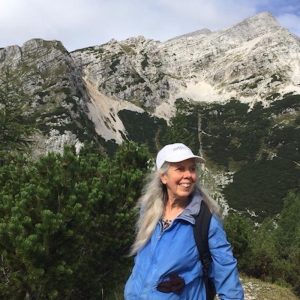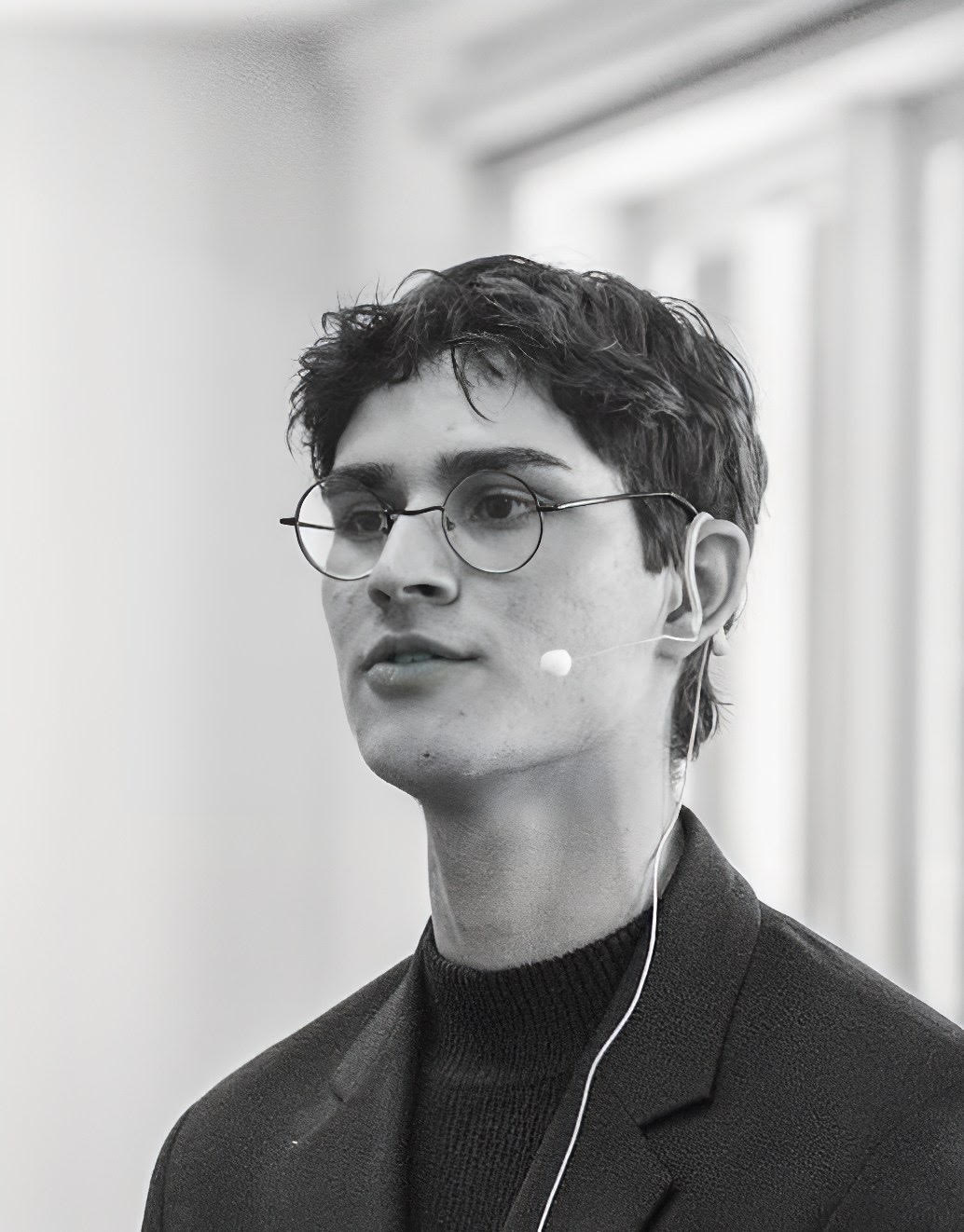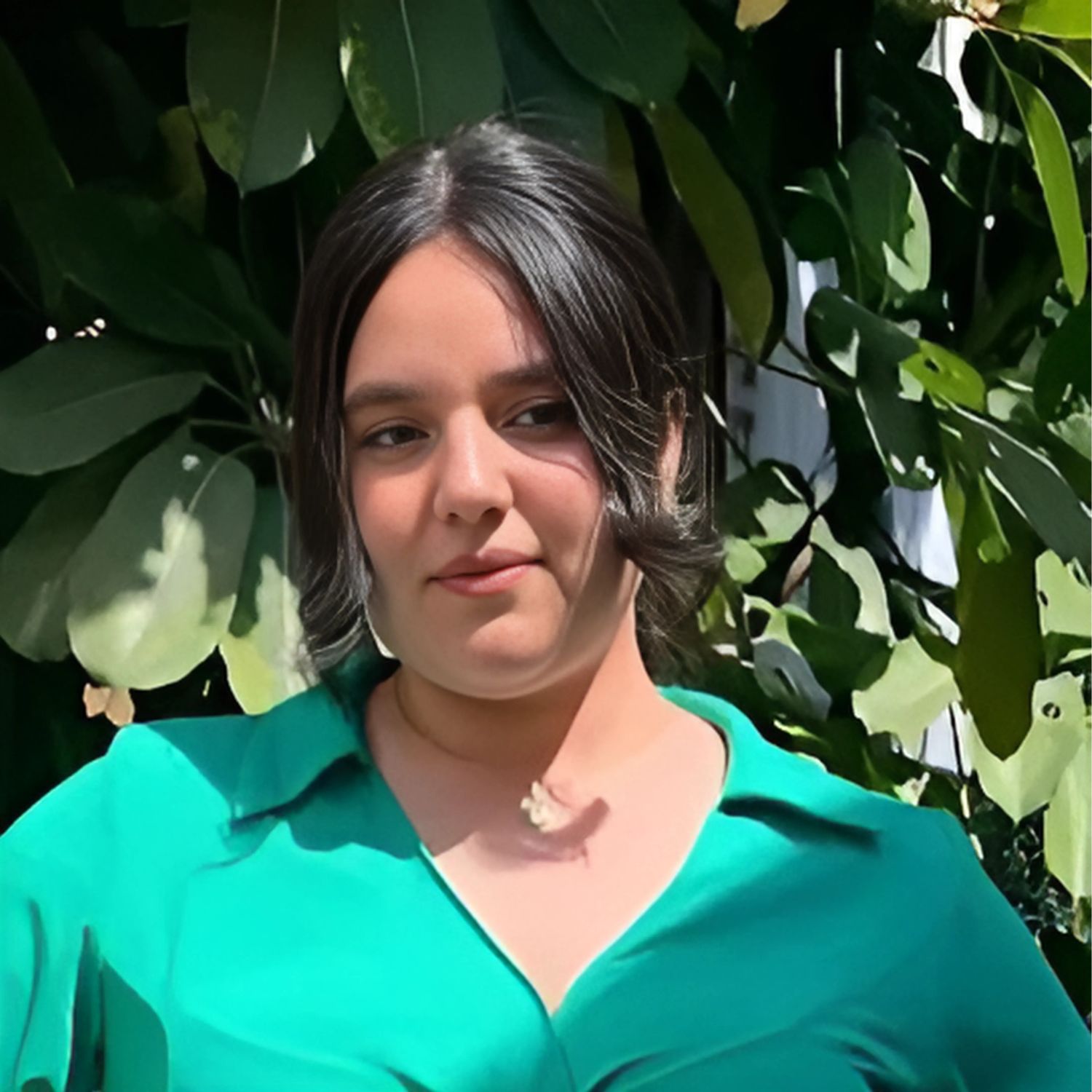
An Interview with Catherine Shaw (MA ’23)
To live the Buddhadharma as a student at DRBU
Q: What made you decide to come to study at DRBU?
I came because I’ve been on the email list for a while. So when I saw that there was the graduation by Zoom, I thought, well, then I can go! The slideshow, which turned out to have a lot of things that we can’t do now because of COVID, [laugh] looked really good! Oh! And what the graduates had to say. I remember the bhikkshuni (Karma Lekshe Tsomo) as the special speaker. Her approach seemed so open. At the time, it had been a year and half of not doing anything outside of personal stuff because of COVID. And I was feeling like I was lacking intensity in my life, and going to school is a pretty intense thing to do. So, “Okay, this looks like something that would be very good for me.”
It was a little more than 20 years ago that I completed a master’s in Buddhist Studies at IBS (Institute of Buddhist Studies) in Berkeley. And of course, one forgets a lot in a decade or two. [laugh] Plus, this is a very different approach. I saw, as was explained in several of the introductory lectures: This is not just looking at the Buddhadharma, but living in the Buddhadharma. I remember when I was writing one of my letters of application saying I didn’t want to go to school where it was just one more academic subject like any other. The IBS is part of the Graduate Theological Union, which is a consortium of a bunch of schools, most of them being Christian. And for the MA, you had to take a couple classes outside of your own school. I took Chinese religion, which was really interesting. There were a lot of Christians in the course. At the beginning of the semester, you could go to a whole bunch of classes for the first day to see which ones you’d like to take. I noticed that people studying the Christian things were not being so careful to make sure that nobody could possibly think they believe what they were talking about; whereas the ones studying the Buddhist things, even people who were themselves Buddhists, they really made a point of academic distancing, which I found a little disheartening. I remember asking somebody about people who study Buddhist studies, and are not themselves Buddhists, why do they do it? The answer was: they think that the language is interesting. They just think it’s interesting. Okay. But that wasn’t my motivation. My motivation was to know more about this very Buddhadharma which I had been committed to for a while. And indeed, I did learn a lot at IBS, and I’m really glad I did it. But to come here, where it is said again and again, we’re not trying to turn you all into Buddhists. You don’t have to be Buddhist to come here. But still, it is within the Buddhadharma way of seeing the world, rather than the total abstraction, just pure academic. So that’s part of why I wanted to come in addition to relearning what I’d forgotten. [laugh]
Q: Has your wish to live in Buddhadharma been fulfilled as a student at DRBU?
I realized that while I definitely want to live the Dharma, I’m not sure I want to live a Buddhist lifestyle. Some dedicated practitioners get up early in the morning to practice. I don’t do that. There are times in my life when I have because it had to be done. But as for my nature, I’m not a morning person, and to do things in the morning is not very helpful. So that part of Buddhist lifestyle I’m really not doing, even though I do consider myself living the Dharma, just not that lifestyle.
Q: How do you define living the Dharma?
What does it mean to me? [pause] Well, ethics is a lot of it. You know, living as harmlessly as possible. Every action should not only be as harmless as possible, but also be as helpful as possible. And most actions are of course both. So if you’re going to really get into it, you’ve got to take a while before doing anything to make this little algebra: harmful versus helpful, which is greater? And obviously, one doesn’t have time to do that for everything, but to have that in mind as a way of making decisions. Because everything is a little bit of both and try to emphasize the wholesome and de-emphasize the unwholesome.
What else? I think that’s probably the basis of it. I haven’t eaten meat for a long time because I didn’t want to cause killing. Although I know there are plenty of Buddhists who do. And going to teachings, of course, and doing practice, even if I don’t do it at five in the morning. Practice, I think, is like going to the lab to have a situation where everything is set up to be as conducive as possible. And by doing that, then you can bring it into the rest of your life. Now we have the Platform Sutra, and the Sixth Patriarch is always saying, go to the essential mind, the ground, as much as possible. Keep that in mind, even if one can’t always do it. That’s part of living the Dharma.
And part of it is living here in the dorm with everybody else. Not living in the community is to me a lot less effective than living in it, walking back and forth between here and the classroom building. And the place! Just being in this place! It’s been a Dharma place for decades now. Four to five decades? It’s easy to feel what it is to be a dharmic person here. Because such people have been living here for half a century. I think that makes a big difference.
Q: Could you say more about how you feel about this place?
Well, I’m sad, of course, that we can’t interact with the left-home people and can’t go into the big Buddha Hall. And I just learned today about the wonderful lotus pond that we cannot go to. [laugh] But even without those things… What was the question again?
Q: You mentioned that this is a Dharma place. How does this place make you feel everyday living here?
Happy. I find myself thinking, “oh, it’s so good to be here.” Yes.
Q: What is it here that makes you happy?
I don’t know. [laugh] You know, being in places dedicated to Dharma. To my mind, that really does infuse. I’ve been to some Dharmic places in Asia and felt a strong feeling. I’ve seen it affect other people who aren’t even Buddhist. I think what goes on in a place over time affects it. It does. A place accumulates an atmosphere of what goes on there. And this place has been a dharmic place long enough that it has that atmosphere. I wonder about all the workers who come to build the new buildings up there and maintain them, if it affects them or not. I don’t know. But I would think so.
Q: What kind of spiritual practice do you feel connected to?
I’m involved with two different ones. I’m immediately involved with a Japanese pure land temple in my town. Jōdo Shinshū is the name of the denomination. It’s fairly new since the 1200s. I’m involved with it because it’s in my town! But I’ve been going there since the 80s. So I’m now one of the elders, and people asked me how we did things. It really surprised me. [laugh] Both my children went through their dharma school. That was another reason to be there because a lot of Buddhist groups don’t include anything for children. But this is specifically family-oriented. So Sunday morning, there would be a service, and the children would go off and do a project or have a little lesson, something like that. And sometimes I had to force them to go. But as adults, they both thank me. They both think that they have perhaps a more effective approach to living than their peers. So that’s one involvement. I’m actually on the board.
The other one is my deeper one, which I’ve been involved in for a long time, is Nyingma, which is known as one of the four schools of Tibetan Buddhism. I met my true teacher in 1979. He died in 1991. So I was able to study with him for a little over 10 years. I visited him twice in his home. When I first met him, I did not realize how fortunate I was. I remember I was at a big teaching by Dudjom Rinpoche, who at the time was the head of the Nyingma lineage. And there was a man standing over there, and it was Lama Gonpo. I thought, “He looks so at home. He must have been here a long time.” And then later I learned he had just arrived. [laugh] The first thing he did was… He got paints. He got a huge like four by six canvas and painted one of the visualizations that we needed to do, one of the very basic ones. It’s very, very detailed. And he made that for us. I have a couple of copies of it. Then afterward, when he went back to Amdo where he’s from, he commissioned somebody else to do another one of the same thing. So I have copies of them next to each other. And then he just set about teaching us. He was so open, and I think he’s a fully realized person. I really do. So that’s my deeper connection. The practice I do is what I learned in that sangha. [pause] And of course, he’s been dead for a long time. We, his students, get together very rarely now, although most of us still have some connection with each other and have studied with a couple of other Tibetan teachers since then, which was good. But he’s definitely the one that matters.
Chinese Buddhism I know very little about. That was part of the reason I wanted to come here because I admire it. I’ve been to China several times and visited centers in the Buddhist mountains and could feel that there’s a strong dharmic presence there, even though it’s been suppressed for a long time. So that’s one of the reasons to come here and learn a bit about what Chinese Buddhism is like. It is more different than what I had expected, which is interesting. Of course, I’m only learning on a superficial level.
Q: So what was different from what you had expected?
I was afraid that you might ask that. [laugh] I guess that [Chinese] Buddhist practitioners are very divorced from everyday life in that they’re up on a mountain somewhere. That’s part of Chinese Buddhism. There might be a temple in town. But those people aren’t the real ones. The real ones are… They have made the sacrifice to come down to town to teach people, but they’d really rather be in the mountains. Something like that. I don’t know.
Q: Which practitioners are more real? How do we know?
Ah! It is an interesting question. Yeah! The bodhisattva vow! You’re supposed to be teaching people. Go up to the mountain maybe to get it together to come back and do— the real! It could be. Yeah, I think that’s probably the stereotypical image [of Chinese Buddhism]. I visited here (CTTB) a couple times in the 80s. And I’ve met Reverend Heng Sure. So I had a little connection. Like I said, I’ve been to Buddhist places in China and talked with people there. But to really study it, I never have. So I thought that would be good.
When we shared what our practices were [in the beginning of this semester], I said recitation and visualization. That’s very Tibetan. And meditation and bowing. Bowing is huge in Tibetan Buddhism—a different style that has a totally different purpose. I knew what the Chinese bows are like, because I’ve done them in places, but before the CEI (Contemplative Exercise Immersion) week here, I wasn’t aware of what I was supposed to be thinking when bowing, which is very different from the Tibetan tradition.
Q: So what was your experience of the bowing and the three-steps-one-bow led by Marty during the DRBU CEI week?
So good! And I think the way it was organized to have twenty minutes of bowing followed by twenty minutes of sitting is brilliant. Everything has improved for me in doing that. Both in the morning one outside with the three-steps-one-bow and the inside one with wonderful cushions that are just exactly the right size and shape. [laugh] I was told they were from the Buddha Hall. Oh my. Whoever designed them knew exactly how big a human is and what angle is just right and what height is just right. But outside on the concrete, that was really good, too.
My main problem was trying to do the right thing at the right time. You know, I couldn’t hear the bell outside and didn’t know when to get up again. And then inside, in Tibetan practice too, it’s common to bow three times before you do anything. But somehow I was never prepared for that. I would be thinking it was going to be a talk next. Okay, I’ve got all my books and stuff out here on the little bowing cushion. And I’m supposed to respect the text, so I can’t just shove them aside. So mostly I ended up just bowing on my sitting cushion. Somebody asked me what was the hardest thing for me [during the week]. That was definitely it. Knowing when to get up from the bowing outside and knowing what’s going to happen next. But as far as the talks, meditation, three-steps-one-bow, and the bowing inside, I think they were just perfect. Couldn’t ask for better.
Q: How about your inner journey that week?
My sitting meditation improved tremendously. And one thing I’ve noticed before when I’ve done a bit of practice (I’ve never been a really intensive practitioner when I compare myself to my Sangha-siblings, but still a lot of practice for me) is that I always feel the whole world seems better afterward. I really noticed that after the week of practice here. Since there were no classes on Friday, I thought I would take advantage of the extra day to go home and get some work done. I’ve done that one time. Now this was the second time. The first time driving down south was pretty miserable. The second time, after the CEI, my thought was, “Oh, what a nice drive this is! Oh, how beautiful everything is!” Generally, traffic doesn’t seem that fine; and there’s quite a lot of it toward the end of that drive. This time I didn’t mind. Isn’t that interesting?
I have a meditation partner that we’ve practiced together for years and now we’re actually getting together via FaceTime on Thursday mornings so we can see each other. And for years we have been practicing somewhere on Mount Tam. And then for lunch, we went to the cafe. It’s handy, but just not the best in the world. But on those days, no problem! So next time, we’ll try McDonald’s and see how we feel. [laugh] Practice really does enhance our way of being in the world. That’s not the purpose of practice, of course. The purpose is to awaken, but maybe that’s like a small awakening, taking joy in the world as it is. I’m just thinking of that right now. It’s almost like a pre-taste of what a deep awakening would be.
I also think it’s really important to have a sense of humor. People who are so serious I feel they’re missing a lot in life. I don’t think I need that sense of humor for having done practice. Although it may be an overall thing. I think to find stuff humorous is very nice. Really makes life prettier, more beautiful.
Q: Maybe let me ask you a closing question? But I don’t have one now. Maybe I’ll say thank you for joining the community. I’m glad that the slideshow got you in here!
[Laugh] Even if it wasn’t too realistic. At one point, all sixteen of us (the MA1 cohort) got together to say something about how we felt about being here. And I said, well, so many of the things that I was really looking forward to: the monastic community, the being in the Buddha hall, the ceramics lab, none of those are available [due to covid precautions], and I’m still perfectly happy here. And we’re able to concentrate on the central stuff. The classes, the people, and what we’re learning.


